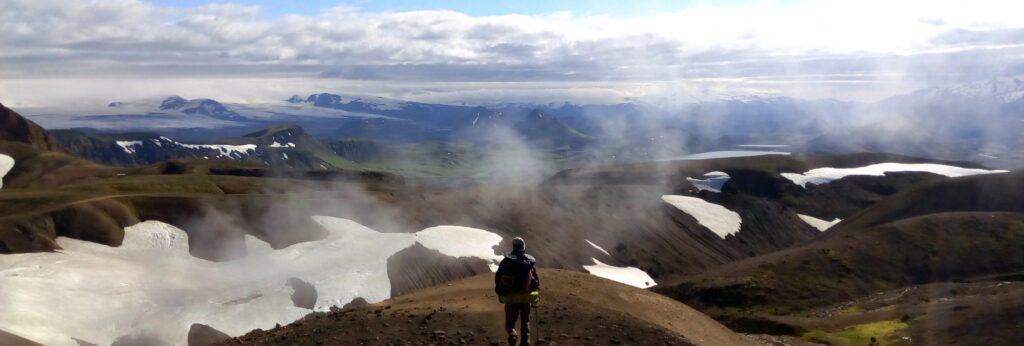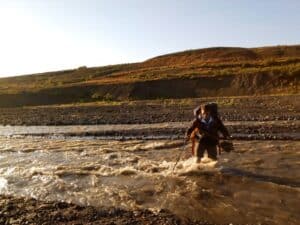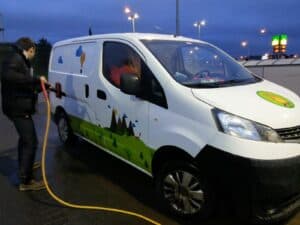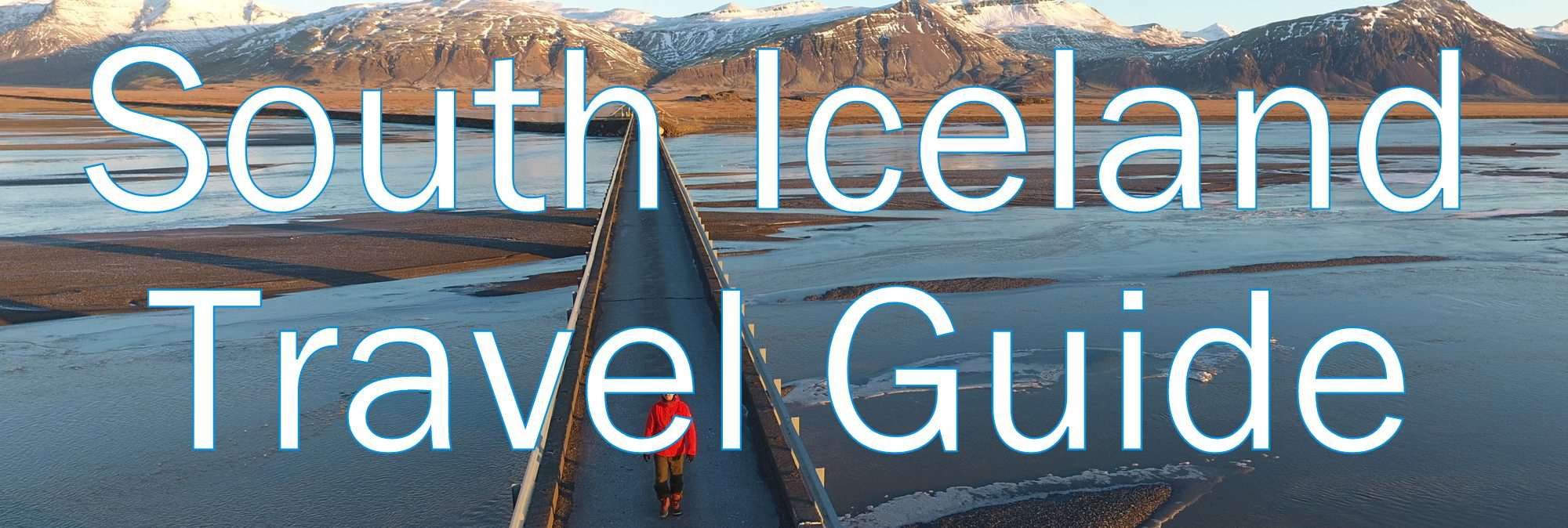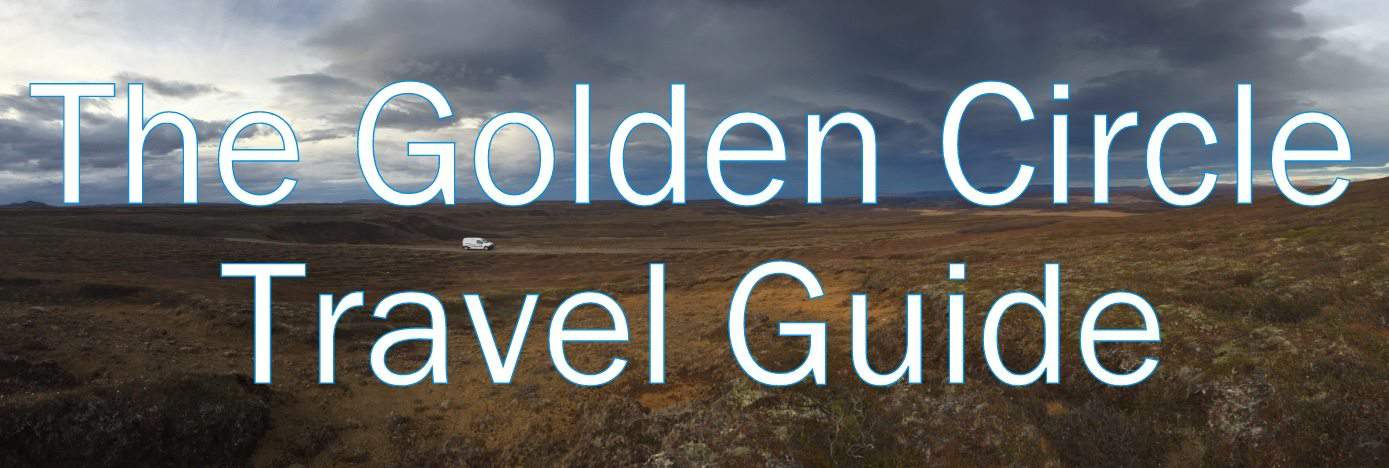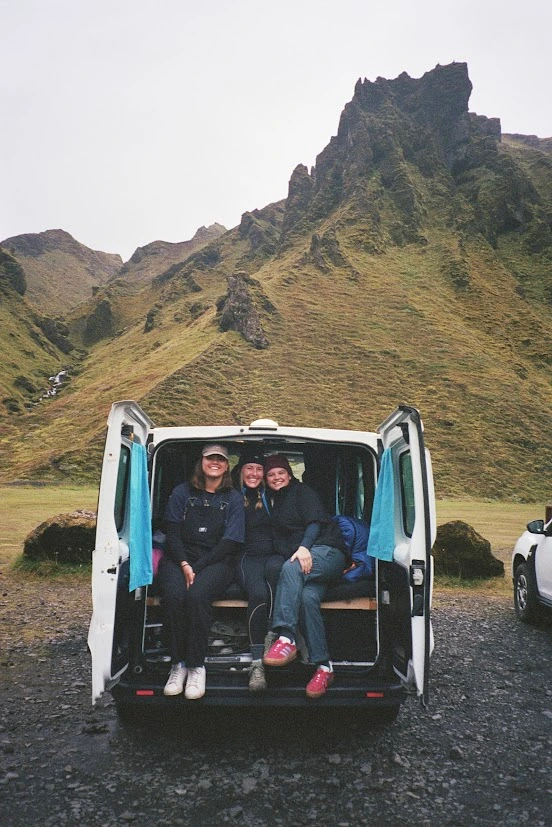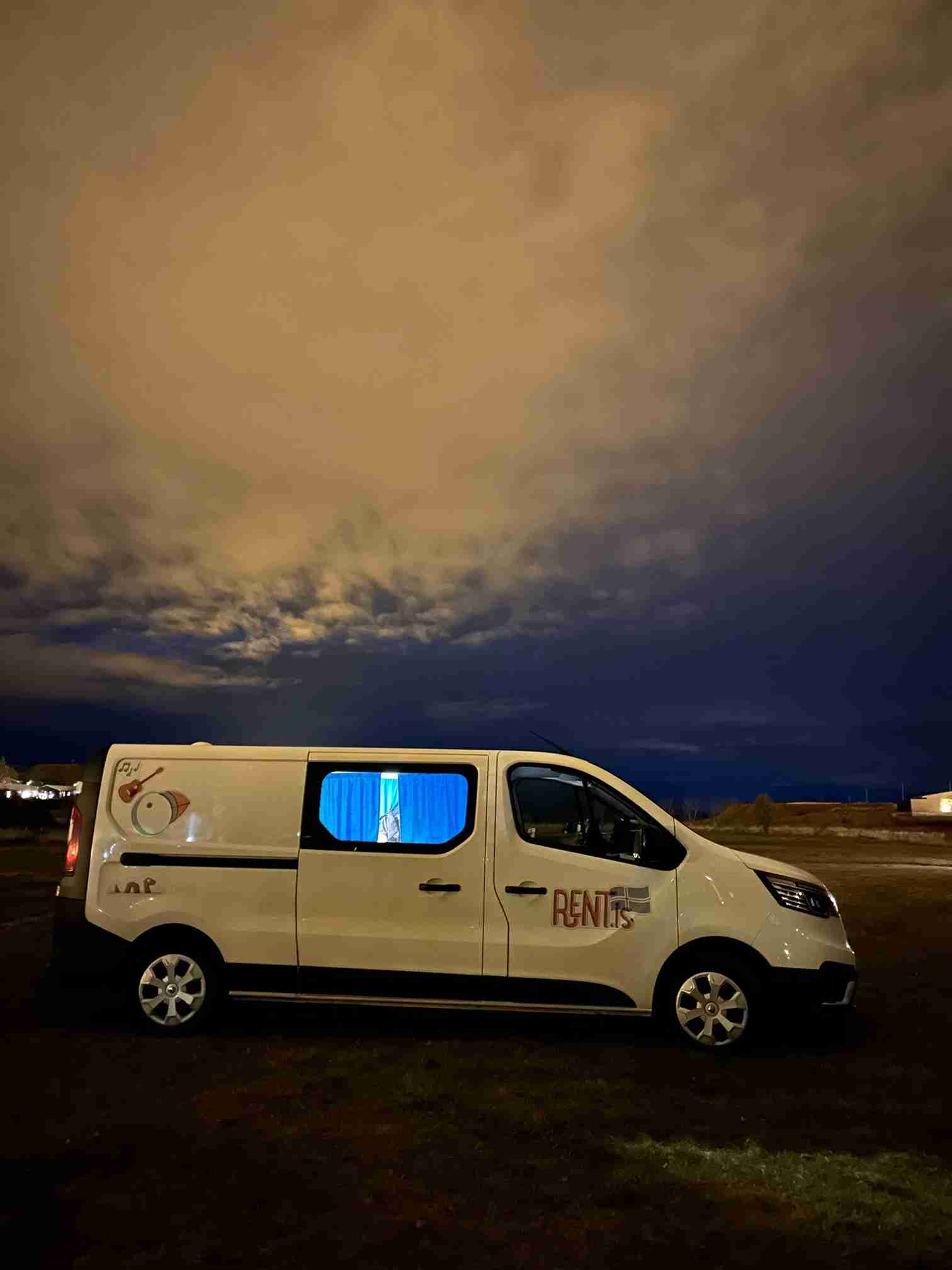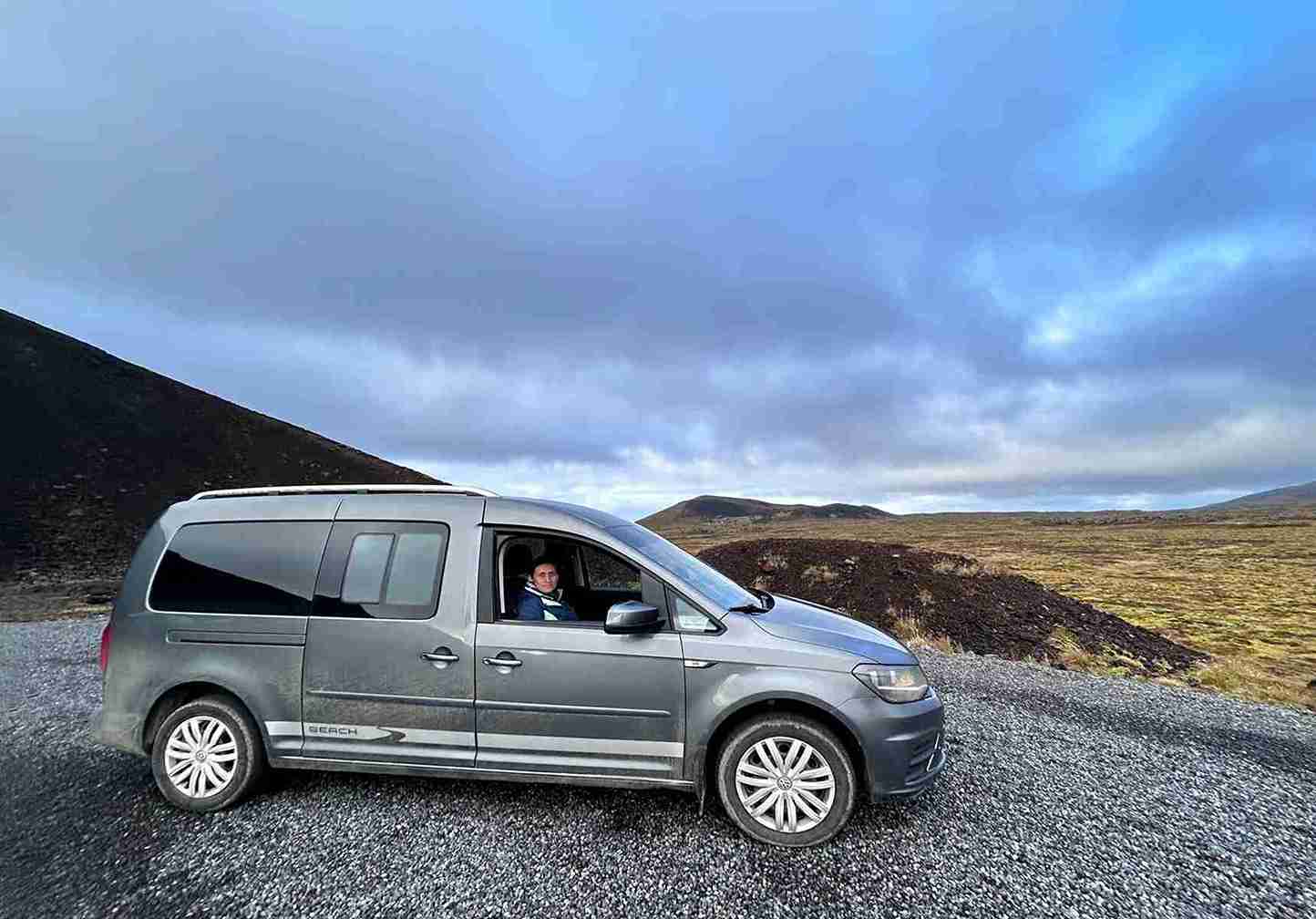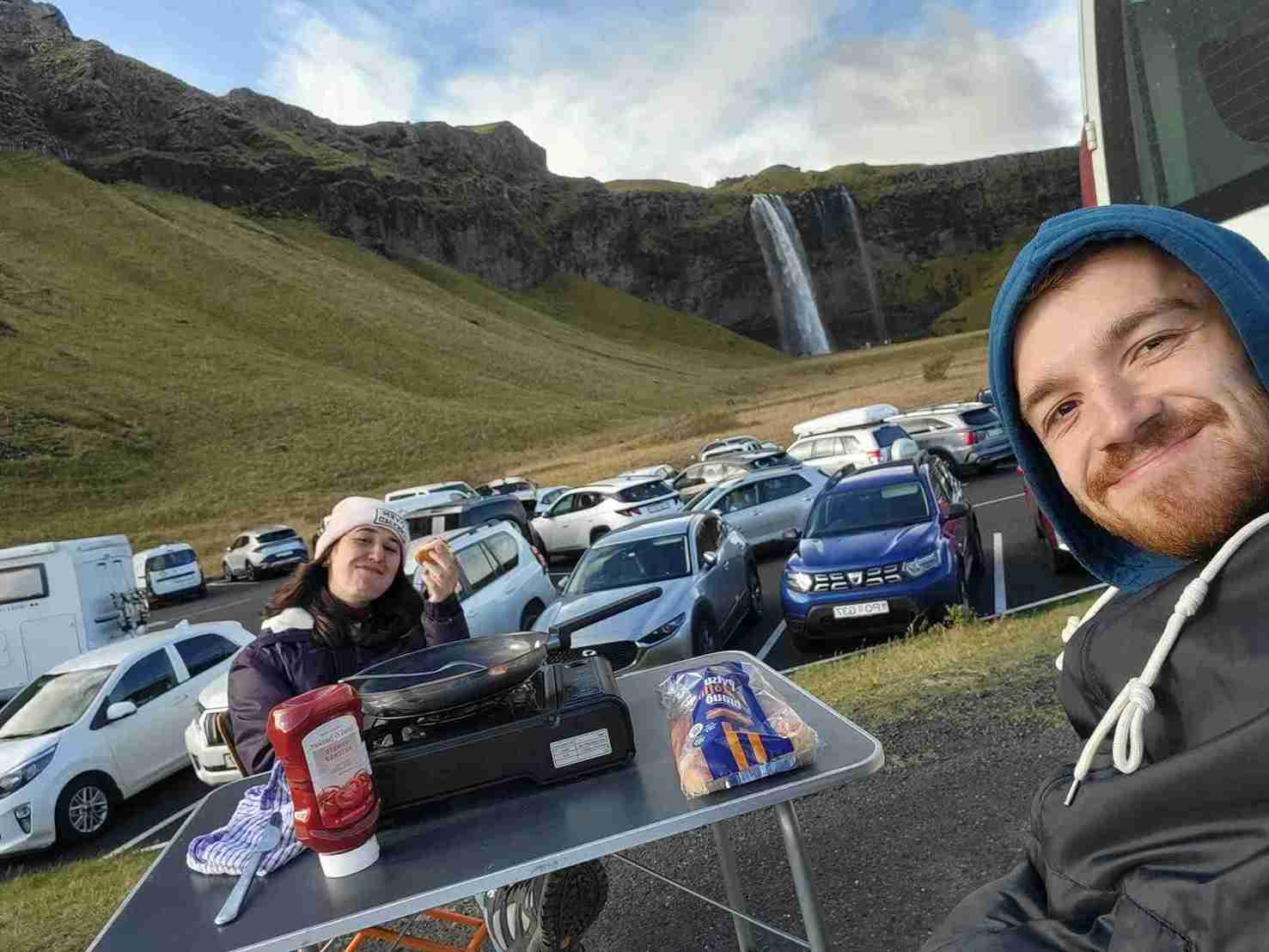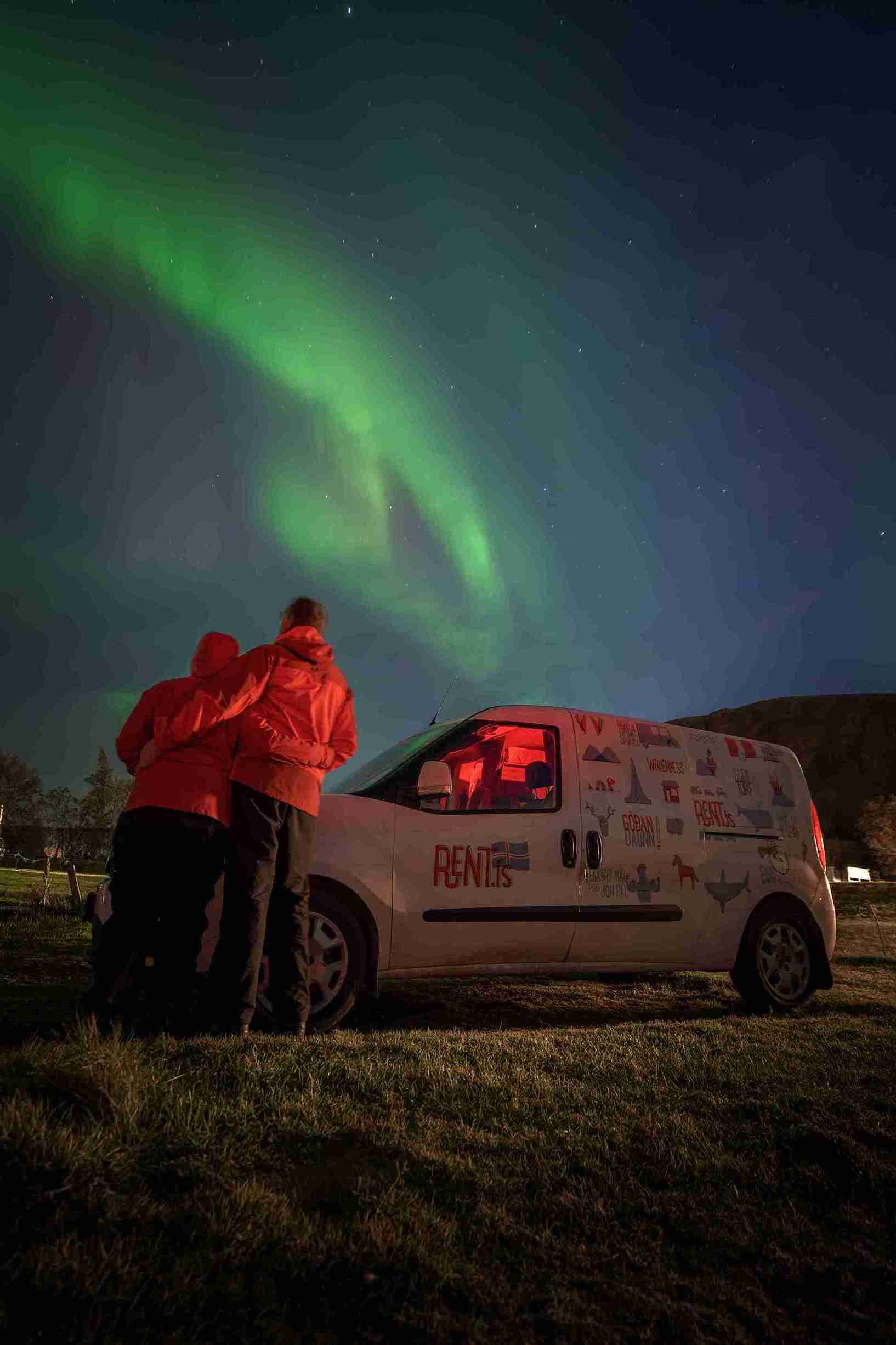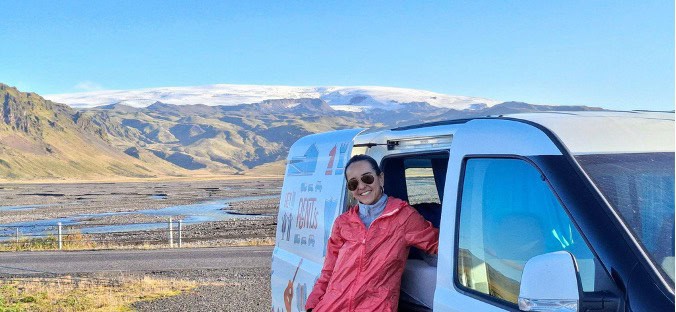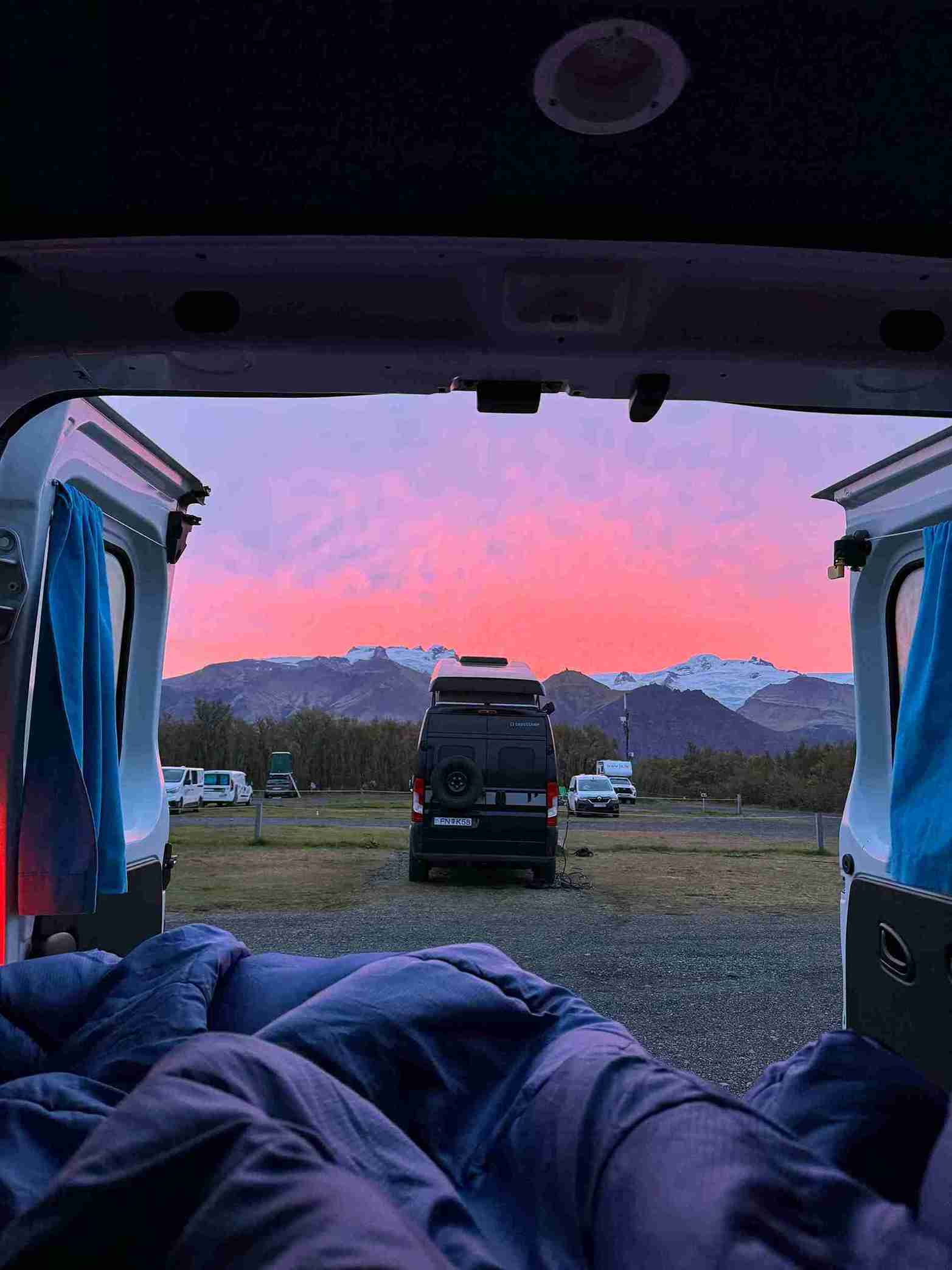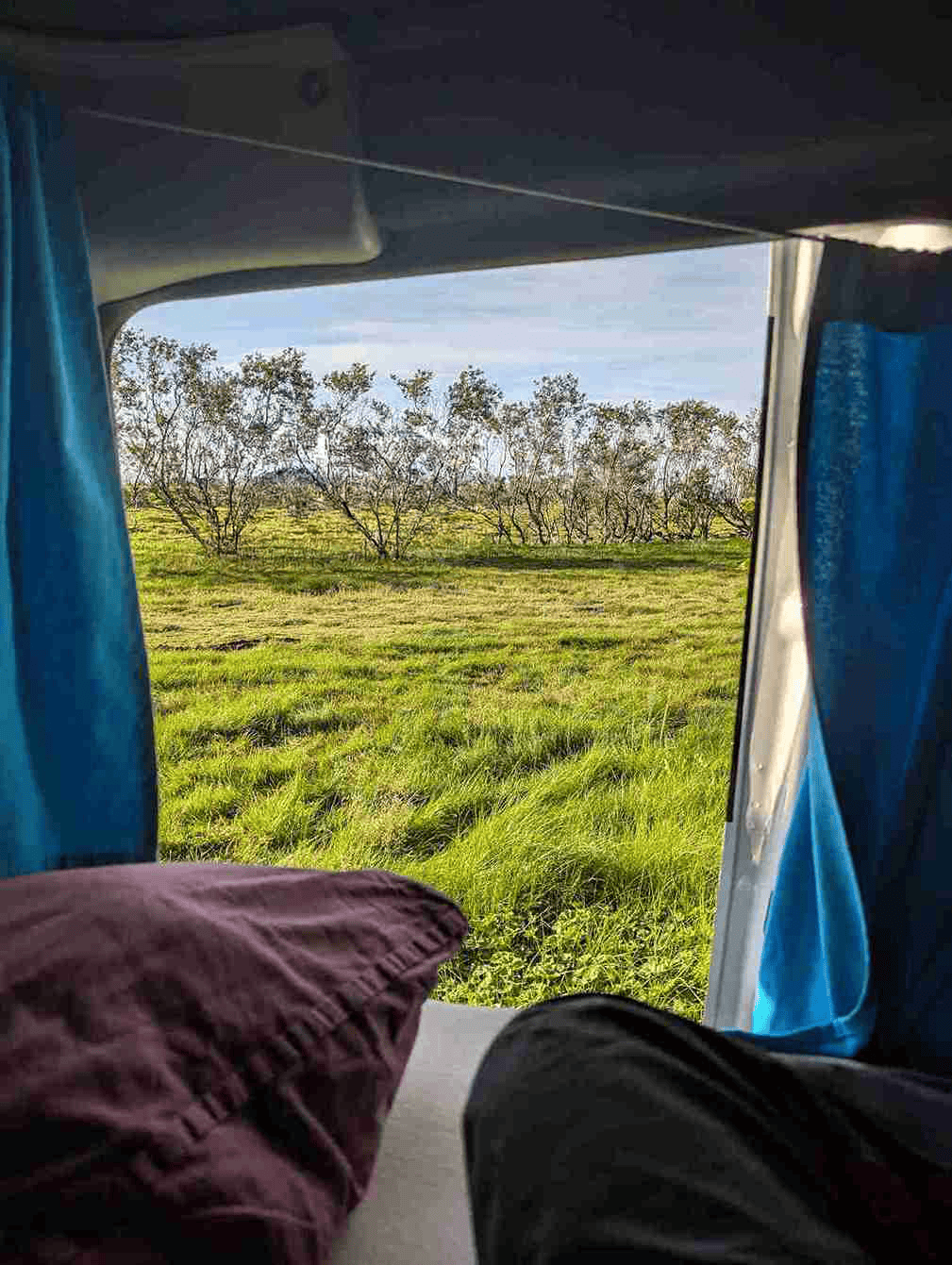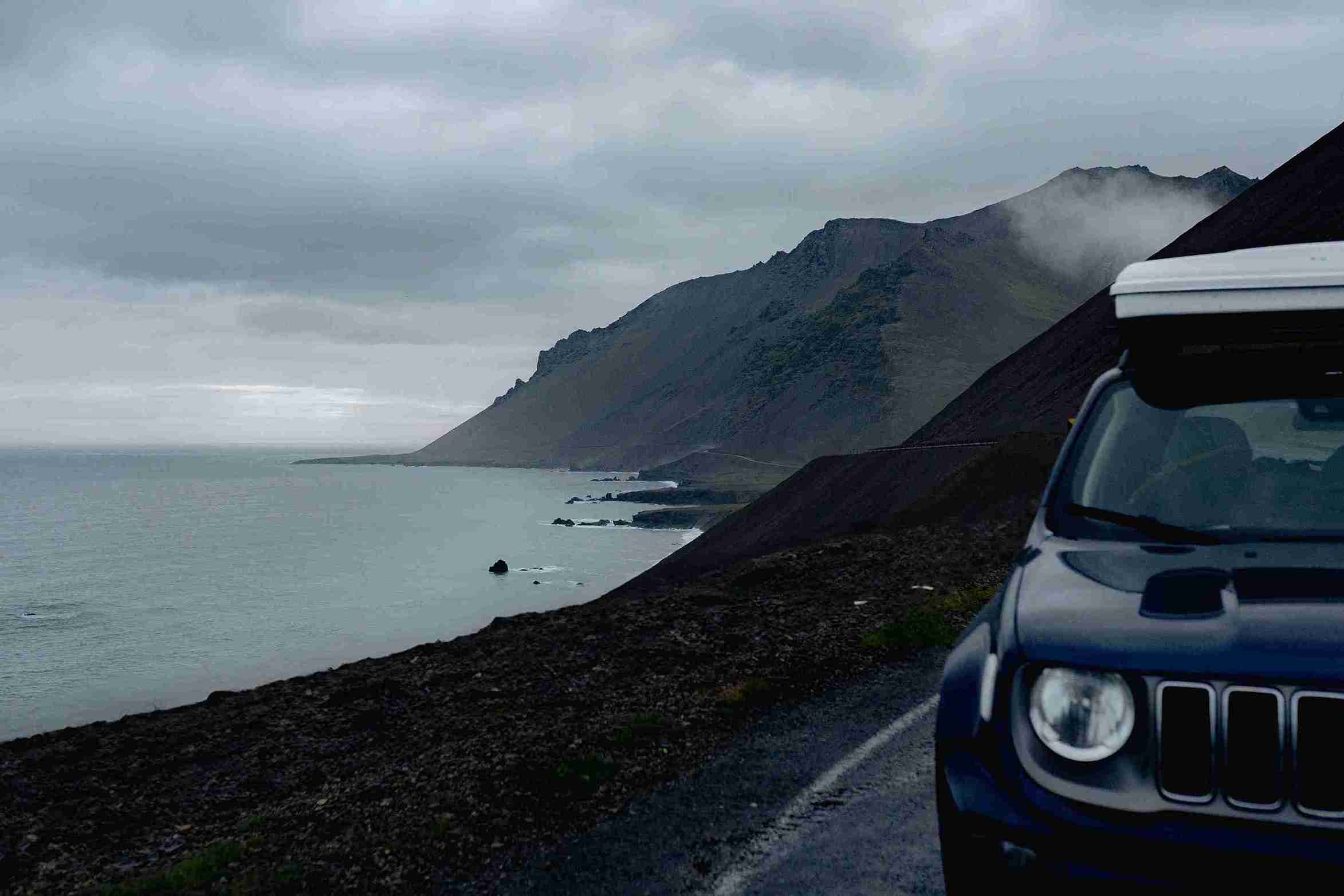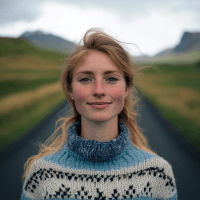July in Madrid, Spain. Forty degrees in the shadow, four friends chatting on a terrace: Iceland can be a refreshing topic. Two of them had visited the island the previous year (we were the other two). The astonishing landscapes and the possibility of sleeping under a blanket in summer had been a positive surprise for them, of course. But it was an Icelandic legend they told which caught my attention in a special way. According to the story, a Viking settler called Þrasi Þórólfsson had hidden a treasure behind one of Iceland’s waterfalls in around 900. Apparently nobody has been able to find it yet.
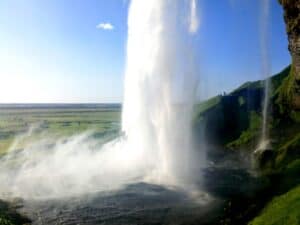
Our adventurous souls didn’t think twice about it, the holiday destination had been decided. We bought two plane tickets and arrived in Reykjavik a rainy day of July. First of all, we needed a vehicle to move around the island in search for the treasure: a camper van with enough place for both of us and a chest full of gold seemed to be the best option.
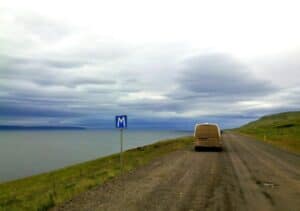
Our first destination was Kirkjufell in Snæfellsnes. The day was rainy and the friendly fox painted on the side of our van soon disappeared under a layer of mud. As soon as we got out of the vehicle, we were as wet as if we had already searched behind every waterfall in Iceland. No trace of the treasure there, but we spent the rest of the day travelling around the peninsula and enjoying Snæfellsjökull , where an Icelandic old woman invited us to the center of the Earth for coffee. Unfortunately, we didn’t have much time, so we kindly declined the offer and drove north.
It was in the Westfjords where we first talked with locals about the hidden chest. At that point we had given up trying to understand Icelandic, so we preferred to interrogate a couple of puffins who accidentally landed next to us after a reckless flight. They had heard that the treasure rested on the opposite side of the island, so we hid our disappointment, went back to the van and headed east.
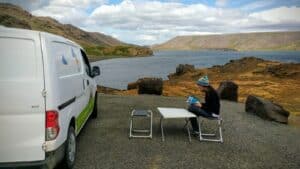
In the north of Iceland we discovered the hotpot concept, where our second challenge aroused: to look for the longest slide in the island (which might sound like a small thing when compared to the original purpose of our trip, but the loops add difficulty). We have to admit that we didn’t dare look for the chest behind Dettifoss, the largest flow in Europe, but at least we had the chance to meet some trolls at Tröllaskagi, who introduced us into the Icelandic sagas, and even to spot some impressive whales at Húsavik.
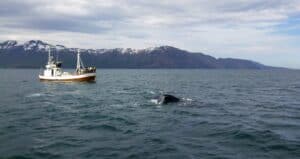
Driving east, we stopped at Hengifoss. There was no luck either: there were visible sedimentary layers, but no hint of gold behind the waterfall. But we were optimistic, we were about to get to the southern part of the island, where waterfalls crammed, according to the maps.
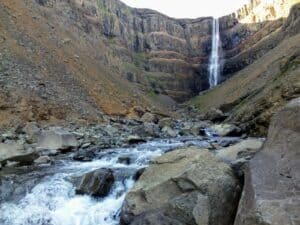
We did a stop in the way, though. We parked our camper van, loaded our backpacks with provisions, and hiked our way through Laugavegurinn, the most famous trekking path in Iceland. We were mesmerized by the landscapes, but there were no golden treasures or slides there. However, the river crossing was a fabulous training before getting into the waterfalls ahead.
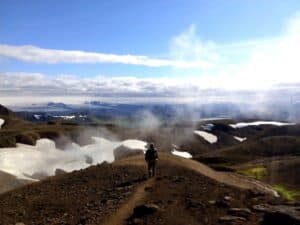
We finally left Þórsmörk and arrived in Seljalandsfoss. We were certainly shocked when we realized that, after the hard training in the Highlands, everyone could walk behind the waterfall! Definitely, the treasure couldn’t be hidden behind this one… So we went on through road 1, a bit discouraged already, to be admitted, to Skógafoss.
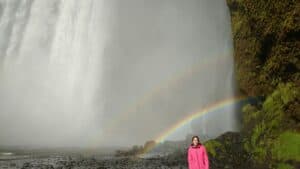
We knew at once that this was the place we were looking for. The sight of two rainbows enclosing the flow of water was breathtaking. We wore our best waterproof clothes, held our breath, and walked briskly across the waterfall. There we were, behind Skógafoss, and there was the chest that Þrasi Þórólfsson had left there more than a thousand years before. The flash of gold blinded us for a few seconds when we opened it, we couldn’t say a word. Without talking, we grabbed the chest and crossed the fall of water once again. Then something went wrong. In a demonstration of strength, the flow teared the treasure chest out of our hands and carried it directly into the Atlantic ocean. We had underestimated the power of nature.
We went back to the camper van crestfallen and empty-handed. We were running out of Icelandic crowns and had just run out of treasure chests. But we soon realized that Skógafoss had made a especial gift to us: during the chest struggle, it had slipped one of the coins of the treasure in my pocket. We were no longer looking for gold, but we were still looking for the longest slide in Iceland.
Back in Reykjavik, we changed our gold coin for Icelandic Krónas in the nearest exchange bureau. We didn’t get many, but it was enough to try Laugardarslaug hotpot. We still don’t know if that blue slide is the longest in Iceland, but for us it was definitely the most especial (and we will always say it’s at least 2 kilometers long).
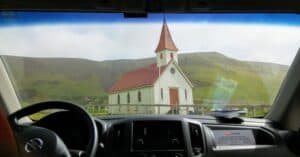
It was now time to leave Iceland. We were willing to tell our story to anyone who would listen to us, so we thought the guy at the rental office would be a good candidate to start with. He didn’t believe a word.
Back in Madrid, we have told this story a couple of times. There’s no treasure anymore, that’s true. But the description of the waterfalls and the camper van experience have been enough to awake the desire to visit Iceland in many.
And that is our story, I hope you will enjoy it,
Laura
Read more: The Secret life of Christie & Tessa
Happy Camping! #CamperStories
Iceland Travel Guides
If you like what you see, please subscribe to our YouTube channel!

